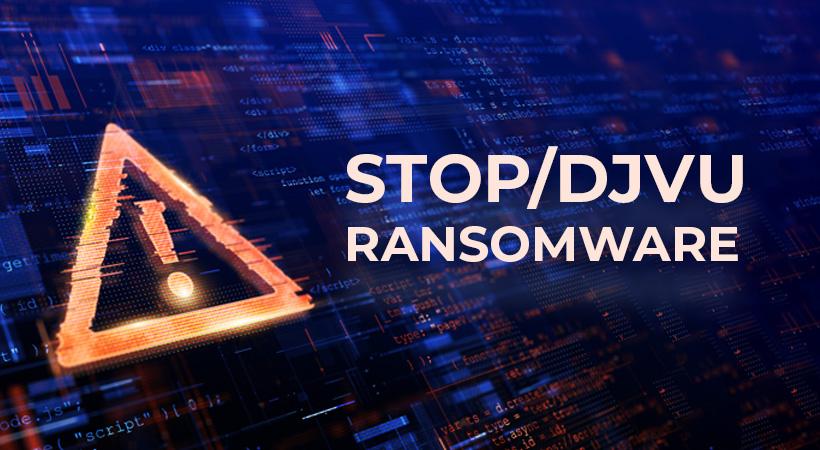Ransomware is a form of malicious software (malware) designed to block access to a computer system or files until a sum of money (ransom) is paid. Cybercriminals often distribute this type of malware via deceptive means, such as phishing emails, malicious downloads, or software vulnerabilities. Once ransomware is installed, it encrypts files on the system, rendering them inaccessible to the user, and demands a payment to restore access. One such ransomware threat is IOR ransomware, a particularly insidious variant that wreaks havoc on the systems it infiltrates.
IOR Ransomware: A Concrete Threat
IOR ransomware is part of the STOP/DJVU ransomware family and is designed to target and encrypt user files on compromised systems, rendering them unusable. It infiltrates systems through malicious websites, software cracks, or spam emails. The ransomware typically disguises itself as a legitimate file, tricking users into downloading and running it.
Once IOR ransomware is executed, it begins by scanning the system for specific file types, such as documents, images, and databases. The files are encrypted using a powerful cryptographic algorithm, making it nearly impossible to decrypt them without the unique decryption key held by the attackers. After encryption, the files are appended with the “.ior” extension (e.g., “file.docx” becomes “file.docx.ior”), clearly indicating that they have been compromised.
Following encryption, IOR ransomware drops a ransom note in each folder containing encrypted files. This note, typically named “_readme.txt”, informs the user that their files have been encrypted and provides instructions on how to contact the attackers via email. It demands a ransom payment in Bitcoin, usually between $490 and $980, in exchange for a decryption tool. The attackers often claim that the decryption tool is the only way to restore access to the encrypted files.
The General Purpose and Impact of IOR Ransomware
The primary goal of IOR ransomware is to extort money from victims by locking them out of their own files. It infiltrates systems using deceptive tactics, like bundled software installers, unsafe downloads, or phishing emails, and then proceeds to encrypt valuable data. The victim, typically an individual or a business, is left with the dilemma of either paying the ransom or losing their data permanently.
Ransomware poses severe threats, not only by making files inaccessible but also by causing significant financial damage. The term “ransomware” comes from the fact that attackers demand a ransom in return for file decryption, leaving victims with little choice. Paying the ransom is not recommended, as there’s no guarantee the attackers will provide the decryption tool.
Symptoms of IOR Ransomware Infection
If your computer is infected with IOR ransomware, you may notice the following symptoms:
- Files on your computer suddenly have the “.ior” extension and cannot be opened.
- A ransom note titled “_readme.txt” appears in folders with encrypted files.
- The system becomes slow or unresponsive.
- Unusual background processes or unknown programs are running.
- Inability to open certain programs or access files.
- A sudden increase in spam emails or unwanted pop-ups.
Text in the IOR ransom note:
All your files have been encrypted!
Don’t worry, you can return all your files!
If you want to restore them, write to the mail: jasalivan@420blaze.it YOUR ID –
If you have not answered by mail within 12 hours, write to us by another mail:ja.salivan@keemail.me
Free decryption as guarantee
Before paying you can send us up to 3 files for free decryption. The total size of files must be less than 3Mb (non archived), and files should not contain valuable information. (databases,backups, large excel sheets, etc.)
How to obtain Bitcoins
Also you can find other places to buy Bitcoins and beginners guide here:
hxxp://www.coindesk.com/information/how-can-i-buy-bitcoins/
Attention!
Do not rename encrypted files.
Do not try to decrypt your data using third party software, it may cause permanent data loss.
Decryption of your files with the help of third parties may cause increased price (they add their fee to our) or you can become a victim of a scam.
Detection Names for IOR Ransomware
Several security vendors detect IOR ransomware under different names, depending on their scanning tools and threat identification mechanisms. Some common detection names include:
- Trojan-Ransom.Win32.STOP
- Ransom:Win32/StopCrypt!ml
- Ransom_StopCrypt.THTH
Similar Threats
Other ransomware threats related to IOR include:
- ZOR ransomware – another variant of STOP/DJVU that appends the “.zor” extension to encrypted files.
- ZEPPELIN ransomware – a more sophisticated variant targeting enterprises, demanding a much higher ransom.
- NEMTY ransomware – known for spreading through exploit kits and encrypted file extortion tactics.
Comprehensive Removal Guide for IOR Ransomware
Removing IOR ransomware and restoring your files requires a systematic approach. Here’s a step-by-step guide:
Step 1: Boot into Safe Mode
- Restart your computer.
- While the system is restarting, press F8 (or the corresponding key on your system) before the Windows logo appears.
- From the boot menu, choose Safe Mode with Networking and press Enter.
Step 2: Use an Anti-Malware Tool (SpyHunter)
- Download SpyHunter, a reputable anti-malware tool, by visiting its official website or through the direct download button.
- Install SpyHunter and launch the application.
- Perform a full system scan to detect IOR ransomware and related threats.
- Once the scan is complete, follow the on-screen instructions to remove all detected threats.
Step 3: Use Decryption Tools (If Available)
While SpyHunter will remove the ransomware, it may not decrypt your files. In some cases, a free STOP/DJVU decryption tool may be available. However, success depends on the type of encryption used:
- Download the STOP/DJVU decryptor from a reputable website.
- Run the decryption tool and follow the instructions to attempt file recovery.
Step 4: Restore Files from Backup
If you have backups of your encrypted files, restore them after ensuring your system is clean. Never restore files while the ransomware is still active, as they may be re-encrypted.
Preventing Future Ransomware Infections
To protect yourself from future ransomware attacks, consider the following security measures:
- Use Anti-Malware Software – Keep your system protected with reputable anti-malware software, such as SpyHunter. Regularly update the software to protect against the latest threats.
- Keep Backups – Regularly back up important files on an external drive or cloud storage. Ensure that backups are disconnected from your computer to prevent them from being encrypted.
- Avoid Suspicious Downloads – Do not download software from unreliable sources, and avoid opening email attachments from unknown senders.
- Update Software – Ensure your operating system and all installed software are up-to-date to prevent vulnerabilities that could be exploited by ransomware.
SpyHunter Promotion
For a quick and effective way to scan your system for IOR ransomware and other threats, download SpyHunter and perform a free scan today. SpyHunter offers a comprehensive solution for malware removal and system protection.





